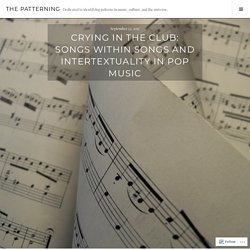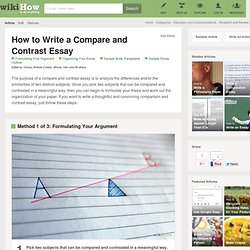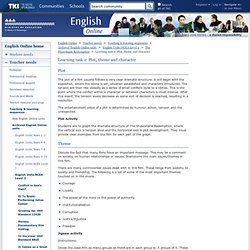

Eye of the Tiger Roar: Intertextuality & Katy Perry. In the Common Core Standards, students in fourth grade and higher are expected to “Compare and contrast the treatment of similar themes and topics (e.g., opposition of good and evil) and patterns of events (e.g., the quest) in stories, myths, and traditional literature from different cultures.”

This is a lot different from the “find one similarity and two differences” that has been the expectation up to now. To help my students compare and contrast themes presented in multiple texts I have come up with this lesson addressing intertextuality using Katy Perry’s new song “Roar.” Purpose: Introduce students to the meaning of intertextuality and provide them with a few examples. Technology/Resources: Katy Perry’s music video Roar: Survivor’s music video for Eye of the Tiger: Queen’s music video for We Are the Champions: Procedures: The Rhetoric of Intertextuality. Workshop 3 Sarah Chambers File 05 Investigator College Semester 2 Intertextual Study.
Crying in the Club: Songs within songs and intertextuality in pop music – The Patterning. By Patrick Metzger Camila Cabello’s hit, “Crying in the Club,” is a tale of the desperate emotions we all feel when faced with a world-shattering breakup.

The protagonist addresses “you,” and we feel as if she’s speaking directly to us: “You think, that you’ll die without him / You know, that’s a lie that you tell yourself.” But she quickly shifts into command form, demanding human contact, “Put your arms around me tonight.” It becomes clear (especially when preceded by the dramatic “I Have Questions” as the prelude to the music video) that our hero is indeed the one in need of comfort. She is telling herself that she needs to have a good time, that she needs to get over her past relationship, that, “There ain’t no crying in the club.” Just when she needs it most, a melody comes out of the ether.
In the age of sampling, it’s easy to miss this particular “song within a song” variety of intertextuality in pop music, but it is very apparent in “Crying in the Club.” Covers. Compare/Contrast Writing: An Introduction. 3 Ways to Write a Compare and Contrast Essay. Edit Article Formulating Your ArgumentOrganizing Your EssaySample Body ParagraphsSample Essay Outline Edited by Teresa, Andrew Crosby, Whoze, Harri and 28 others The purpose of a compare and contrast essay is to analyze the differences and/or the similarities of two distinct subjects.

Once you pick two subjects that can be compared and contrasted in a meaningful way, then you can begin to formulate your thesis and work out the organization of your paper. Writing Comparison and Contrast Essays. Comparison or Contrast A Comparison or Contrast essay is an essay in which you either compare something or contrast something.

A comparison essay is an essay in which you emphasize the similarities, and a contrast essay is an essay in which you emphasize the differences. We use comparison and contrast thinking when deciding which university to attend, which smartphone to buy, or whether to vacation at home or abroad. When comparing or contrasting something, writers have two classic organizational patterns from which to choose. One is called block arrangement of ideas; the other is called point-by-point or alternating arrangement of ideas. A second way to organize this material is to discuss a particular point about vacationing in the mountains and then immediately to discuss the same point about vacationing at the beach. What follows are two short essays, one illustrating block and the other illustrating point-by-point organization. Which Would YOU Prefer, and Why? A. B. 1. 2. 3. 4. Essay instruction words / Earth under pressure / English Units: Level 5 / New English Online units / Teaching & Learning sequences / Teacher needs / English Online / English - ESOL - Literacy Online website - English.
Learning task 2: Plot, theme and character / The Shawshank Redemption / English Units:NCEA Level 2 / Archived English Online units / Teaching & Learning sequences / Teacher needs / English Online / English - ESOL - Literacy Online website - English - ESOL. Plot The plot of a film usually follows a very clear dramatic structure.

It will begin with the exposition, where the scene is set, situation established and characters introduced. The tension will then rise steadily as a series of small conflicts build to a climax. This is the point where the conflict within a character or between characters is most intense. After this event, the tension levels decrease as some sort of decision is reached, resulting in a resolution. The entertainment value of a plot is determined by humour, action, tension and the unexpected. Plot Activity Students are to graph the dramatic structure of The Shawshank Redemption, where the vertical axis is tension level and the horizontal axis is plot development. Theme Discuss the fact that many films have an important message. There are many controversial issues dealt with in this film. Compareandcontrast.